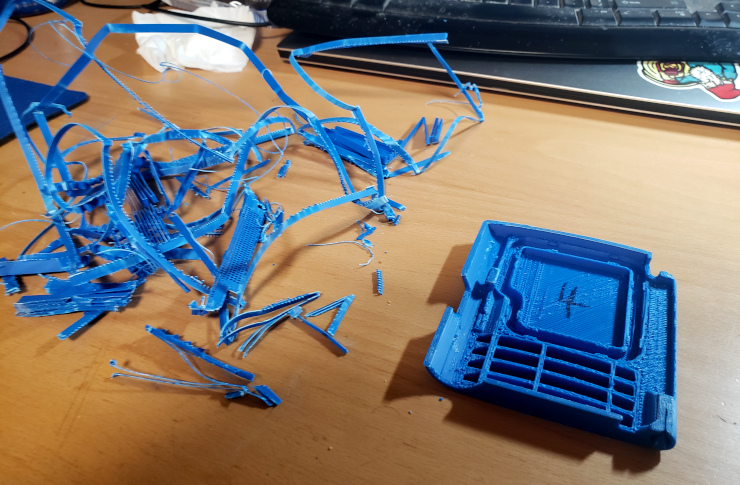
I recently needed to print a replacement door for the Whirlpool dishwasher’s detergent dispenser. This post details my adventure, which took three prints to get it right.
For the short version of the story, see All3DP’s brief page on how to stop ABS print warping. For the whole story, read on.
LATE UPDATE: Prusa’s excellent post on food safe printing basically says ABS = bad and that it’s really hard to make a safe 3D print regardless of the type of filament. In my opinion, you’re probably better off buying the Whirlpool replacement part rather than printing something that will harbor bacteria and fungi.
Continue reading Printing an ABS Dishwasher Detergent Door →

I often 3D print screw-top parts to replace broken or missing parts. For example, we recently installed media (blackout) shades for our skylights, so we can watch movies when the sun is out. Our family room ceiling is quite high, so the pole and hook designed to open and close the new shades is too short.
Continue reading Designing 3d printed threads to match existing parts →

I’ve found 3D printing to be perfect for creating replacement parts for the various things that break around the house. Recently I realized that I could make a replacement for the armoire door clip that had been bent beyond recognition over the years. This post details how I designed and tested the 3D printed replacement, including a checklist at the end of this post.
Continue reading Designing a 3D printed cabinet clip replacement →

I’ve been having trouble gluing PLA parts together reliably., so I decided to do a brief experiment.
Continue reading Experimenting with PLA glue →

“Do I have enough filament to print this one thing?” That’s the question on my mind whenever I’m nearing the end of a reel of filament. I can’t stand wasting a few meters of filament by underestimating what’s left, and I don’t want to unwind a few meters of filament just to measure it and wind it back on the reel.
Continue reading How to Estimate Your Remaining Filament →

I’ve been designing 3d printed parts for a while now, and thought I had the process down to a science. Continue reading What is a Brim and why does my 3d print need one? →
Technical Writing and Self-Pubilshing






